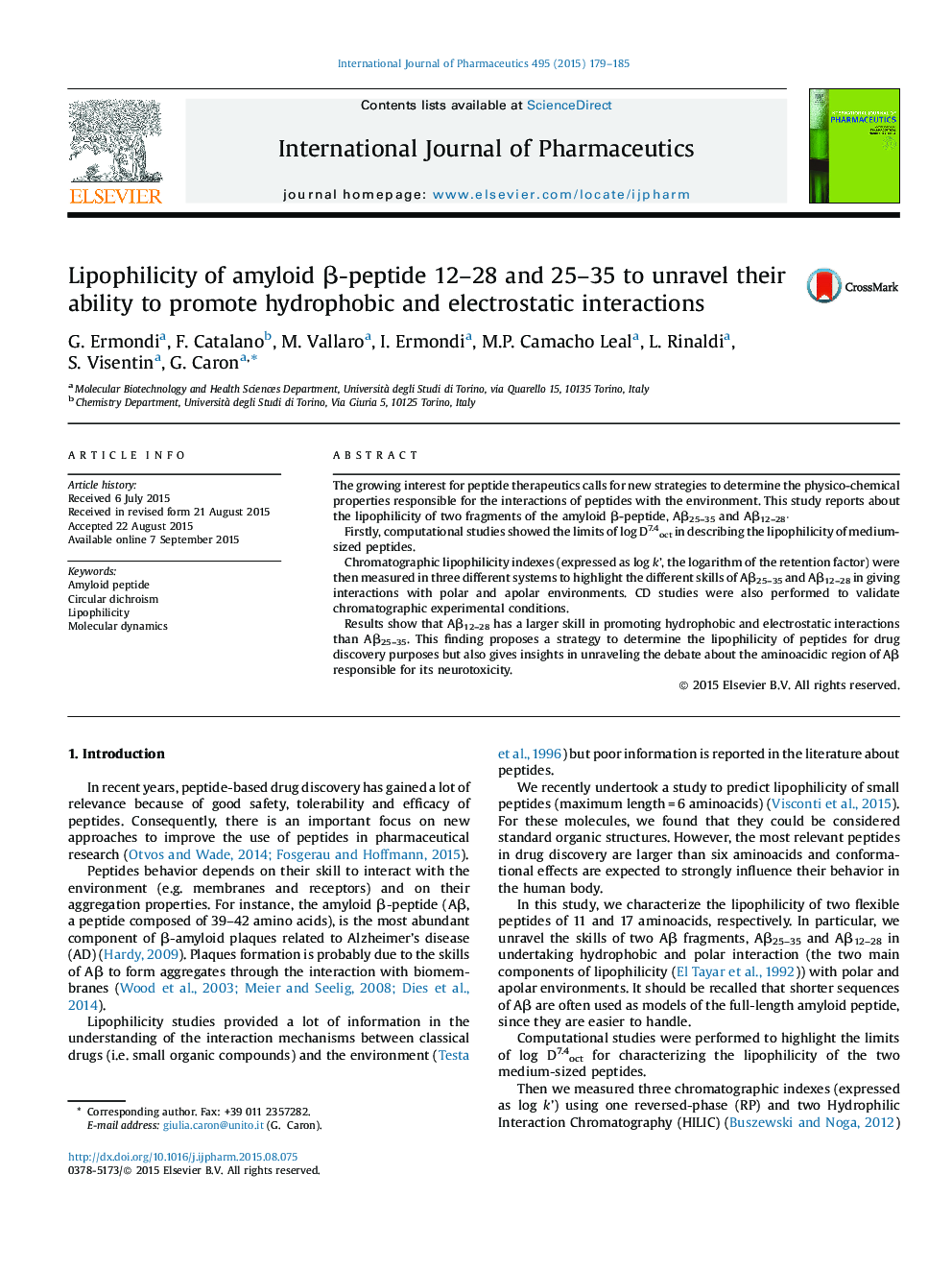| Article ID | Journal | Published Year | Pages | File Type |
|---|---|---|---|---|
| 5818366 | International Journal of Pharmaceutics | 2015 | 7 Pages |
The growing interest for peptide therapeutics calls for new strategies to determine the physico-chemical properties responsible for the interactions of peptides with the environment. This study reports about the lipophilicity of two fragments of the amyloid β-peptide, Aβ25-35 and Aβ12-28â Firstly, computational studies showed the limits of log D7.4oct in describing the lipophilicity of medium-sized peptides.Chromatographic lipophilicity indexes (expressed as log k', the logarithm of the retention factor) were then measured in three different systems to highlight the different skills of Aβ25-35 and Aβ12-28 in giving interactions with polar and apolar environments. CD studies were also performed to validate chromatographic experimental conditions.Results show that Aβ12-28 has a larger skill in promoting hydrophobic and electrostatic interactions than Aβ25-35. This finding proposes a strategy to determine the lipophilicity of peptides for drug discovery purposes but also gives insights in unraveling the debate about the aminoacidic region of Aβ responsible for its neurotoxicity.
Graphical abstractDownload high-res image (82KB)Download full-size image
